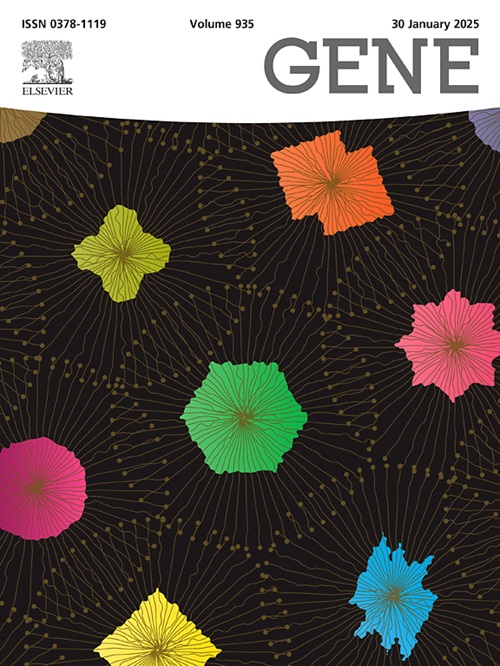来自极化小胶质细胞的外泌体:通过蛋白质组学深入了解影响脑出血的潜在机制。
IF 2.6
3区 生物学
Q2 GENETICS & HEREDITY
引用次数: 0
摘要
脑内出血(ICH)是一种破坏性脑卒中,发病率和死亡率都很高。小胶质细胞是颅内先天性免疫细胞,通过直接或间接方式在脑出血中发挥关键作用。囊泡运输是细胞间通信的基本机制。最近的研究发现,小胶质细胞在特定的极化状态下通过衍生的细胞外囊泡与 ICH 的发病机制、物质和信号传输相关。不同的极化状态会触发不同的功能,但这些状态下的外泌体蛋白质组的特征仍然不甚明了。在此,我们假设小胶质细胞外泌体特征会随着极化状态的不同而变化,从而影响其功能范围并影响脑出血的预后。在体外脑出血模型中,给予 20 μg/ml LPS 诱导的 M1 小胶质细胞衍生外泌体(M1-Exo)与 HT22 会增强血清素诱导的神经元死亡,而 IL-4 诱导的 M2 小胶质细胞衍生外泌体(M2-Exo)会显著减少血清素诱导的细胞凋亡和炎症。然后,我们通过无标记定量质谱(LFQ-MS)鉴定了这些极化条件下小胶质细胞衍生外泌体的新型特异性状态蛋白质组图谱。蛋白质含量分析确定了几种外泌体标志性蛋白质和数百种在不同极化状态下差异表达的蛋白质。具体来说,包括 UMOD、NLRP3、ACOD1、IL1RN、血红素加氧酶 1 (HMOX1)、CCL4 和 TNFRSF1B 在内的 M1-Exo 蛋白富集于炎症通路,而 M2-Exo 蛋白则富集于自噬、泛素化和线粒体呼吸。对这些不同外泌体蛋白的分析表明了独特的蛋白质组学特征以及可能的细胞内信号传输和调控机制。这些发现为研究小胶质细胞外泌体提供了新的视角和资源,并为开发针对小胶质细胞外泌体介导途径的新型治疗策略铺平了道路。本文章由计算机程序翻译,如有差异,请以英文原文为准。
Exosomes from polarized Microglia: Proteomic insights into potential mechanisms affecting intracerebral hemorrhage
Intracerebral hemorrhage (ICH) is a devastating form of stroke associated with significant morbidity and mortality. Microglia are intracranial innate immune cell that play critical roles in Intracerebral hemorrhage through direct or indirect means. Vesicle transport is a fundamental mechanism of intercellular communication. Recent studies have identified microglia in specific polarized states correlate with pathogenesis, material and signal transmission in ICH through derived extracellular vesicles. Diverse polarization states trigger distinct functions, however, the exosome proteomes across these states remain poorly characterized. Here, we hypothesized that microglia exosomal profiles vary with polarization states, impacting their functional repertoire and influencing outcomes in cerebral hemorrhage. In vitro model of cerebral hemorrhage, administration of 20 μg/ml LPS-induced M1 microglia derived exosomes (M1-Exo) with HT22 enhanced hemin-induced neuronal death, while IL-4-induced M2 microglia derived exosomes (M2-Exo) significantly reduced hemin-induced cell apoptosis and inflammation. Then we identified novel state-specific proteomic profiles of microglia-derived exosomes under these polarization conditions through label-free quantitative mass spectrometry (LFQ-MS). Analysis of protein content identified several exosomal signature proteins and hundreds of differentially expressed proteins across polarization states. Specifically, proteins including UMOD, NLRP3, ACOD1, IL1RN, heme oxygenase 1 (HMOX1), CCL4, and TNFRSF1B in M1-Exo were enriched in inflammatory pathways, while those in M2-Exo exhibited enrichment in autophagy, ubiquitination, and mitochondrial respiration. The analysis of those diverse exosomal proteins suggested unique proteomic profiles and possible intracellular signal transmission and regulation mechanisms. Together, these findings offer new insights and resources for studying microglia-derived exosome and pave the way for the development of novel therapeutic strategies targeting microglial exosome-mediated pathways.
求助全文
通过发布文献求助,成功后即可免费获取论文全文。
去求助
来源期刊

Gene
生物-遗传学
CiteScore
6.10
自引率
2.90%
发文量
718
审稿时长
42 days
期刊介绍:
Gene publishes papers that focus on the regulation, expression, function and evolution of genes in all biological contexts, including all prokaryotic and eukaryotic organisms, as well as viruses.
 求助内容:
求助内容: 应助结果提醒方式:
应助结果提醒方式:


